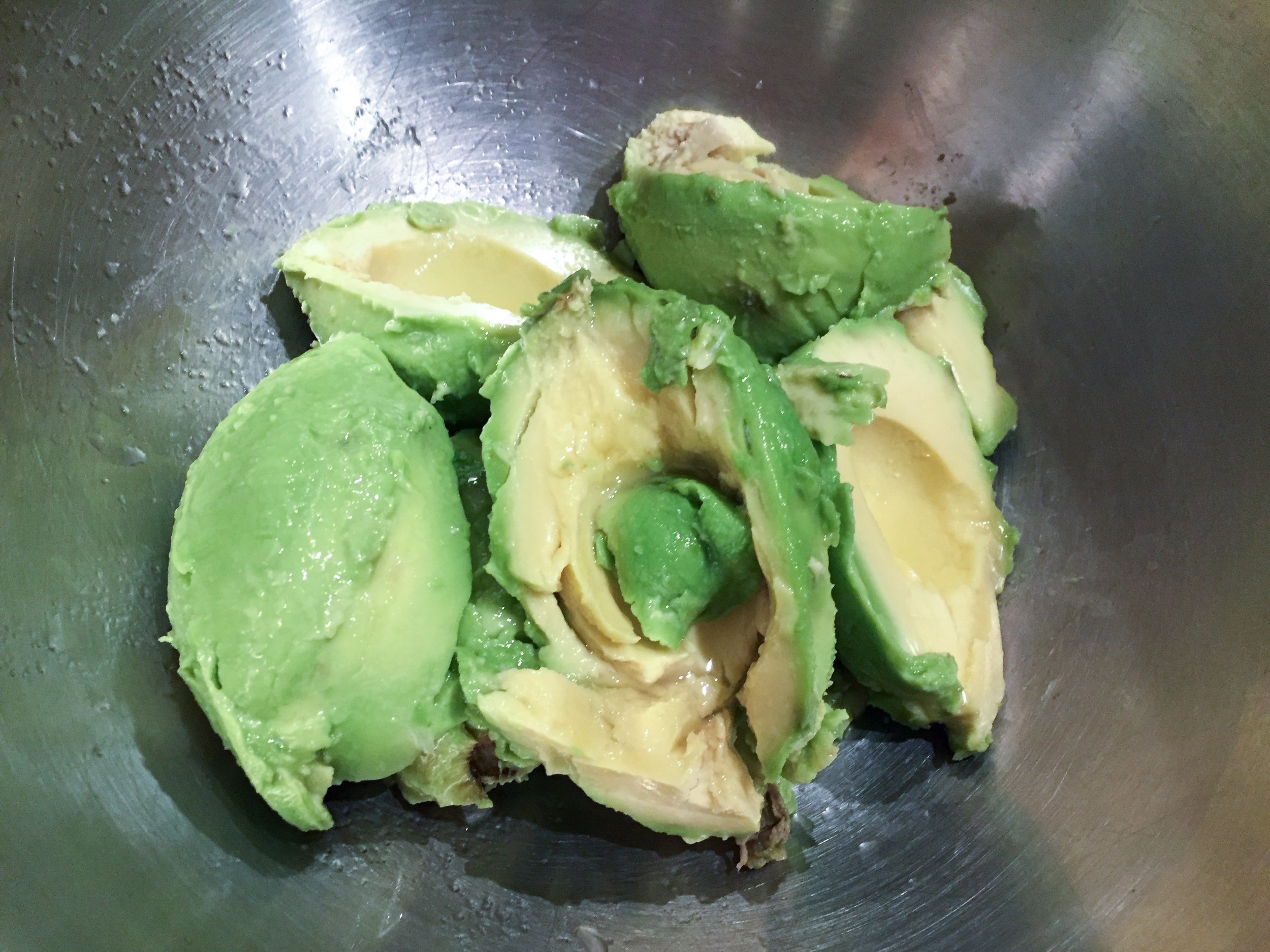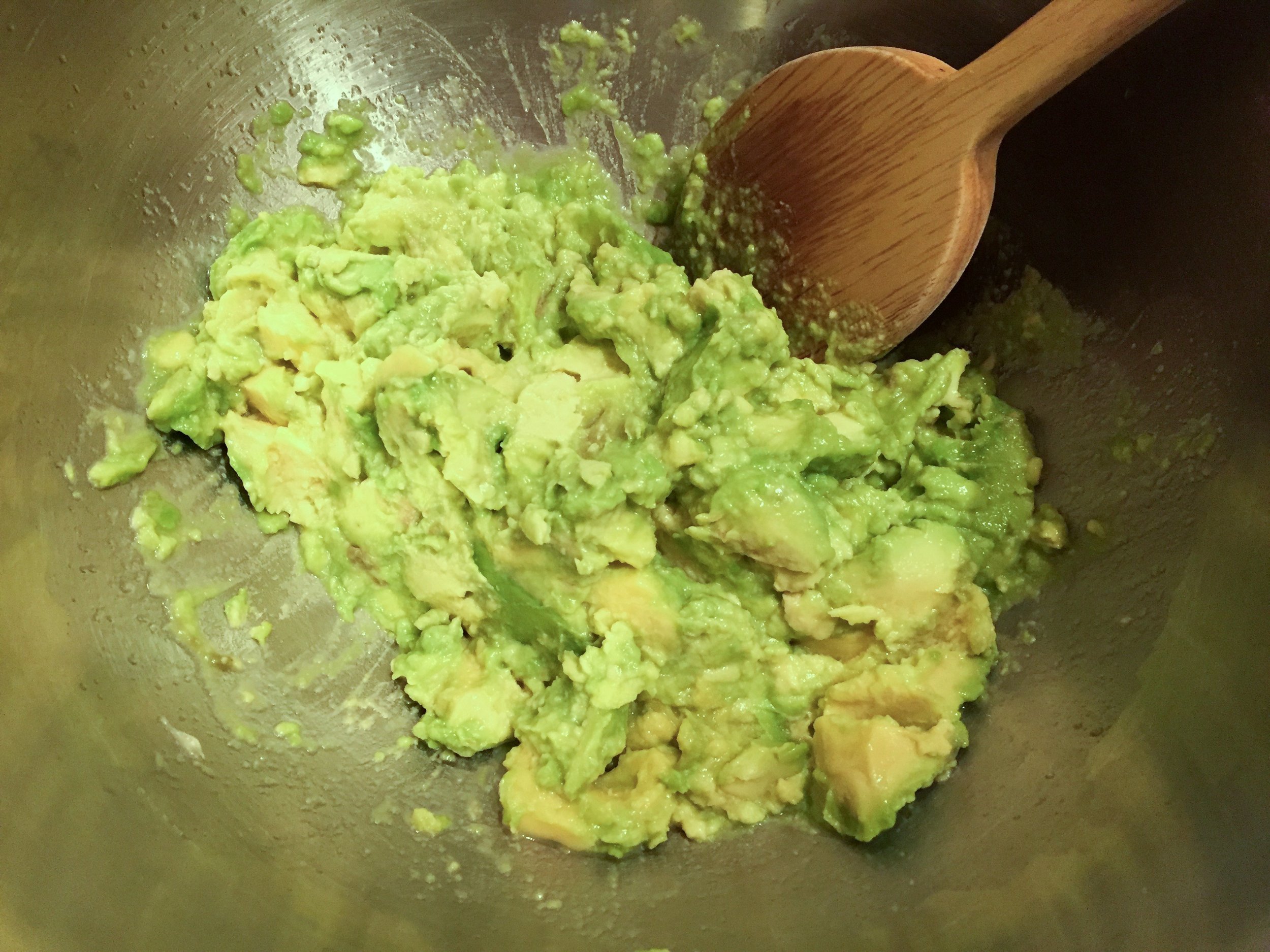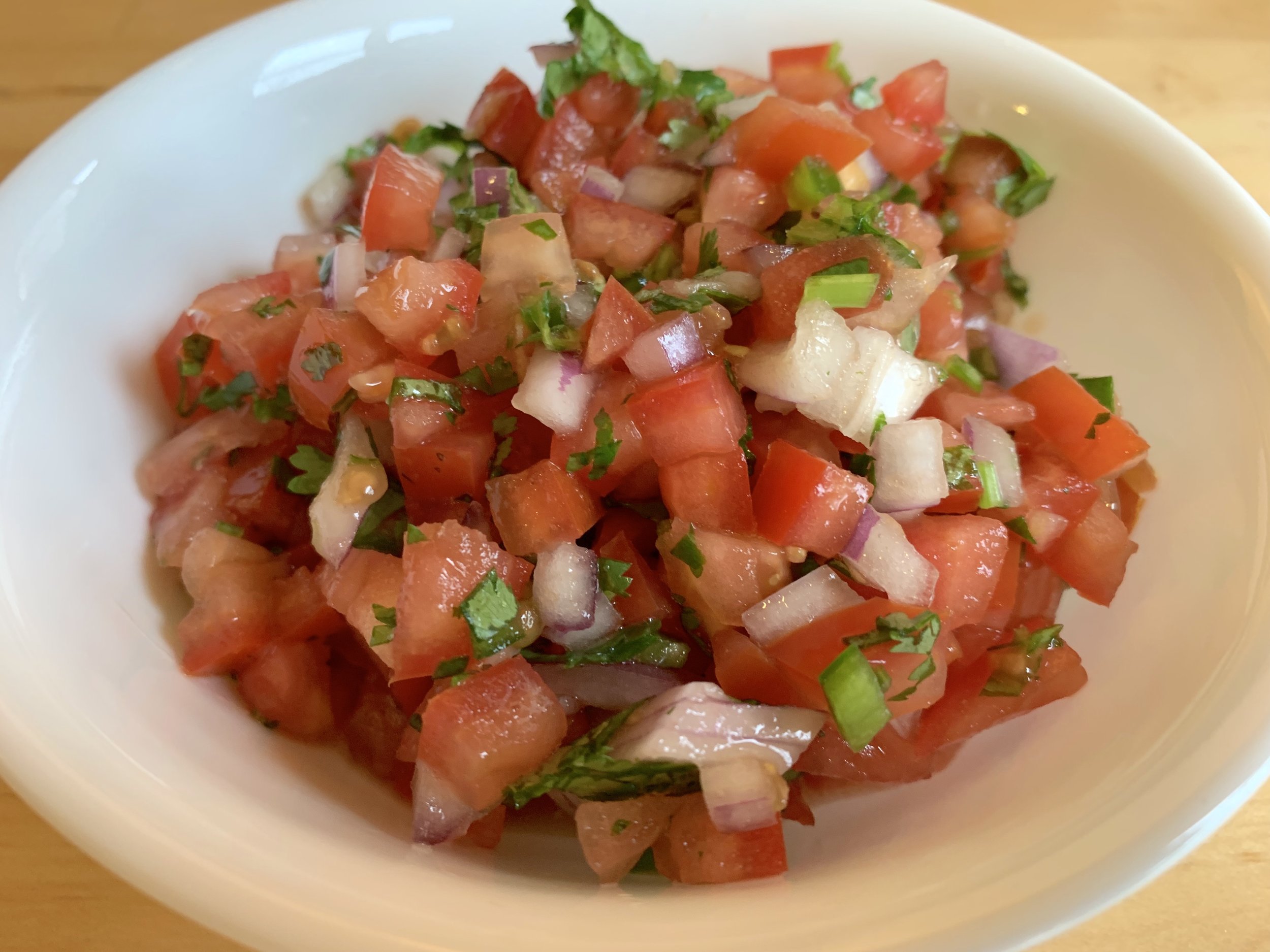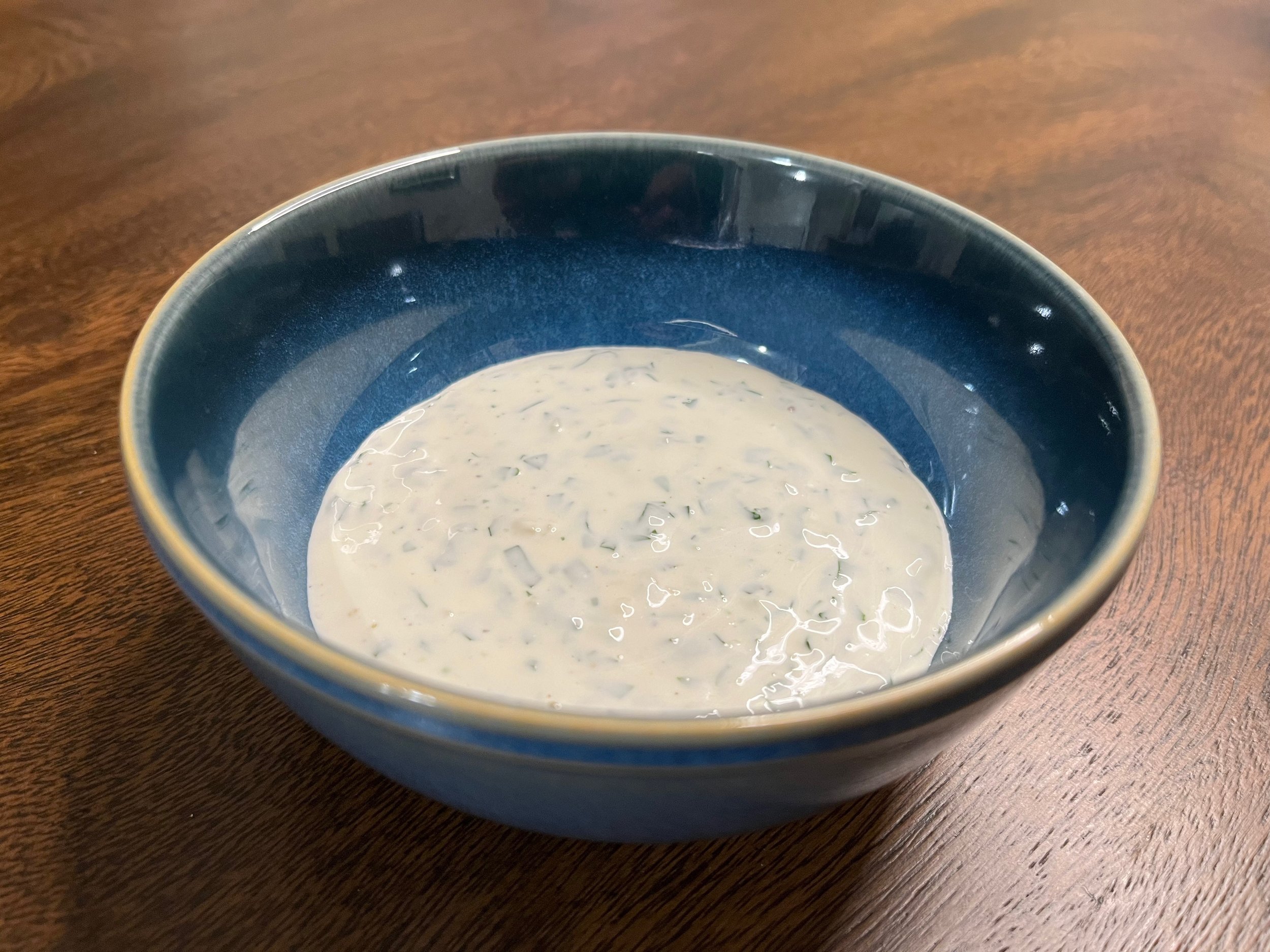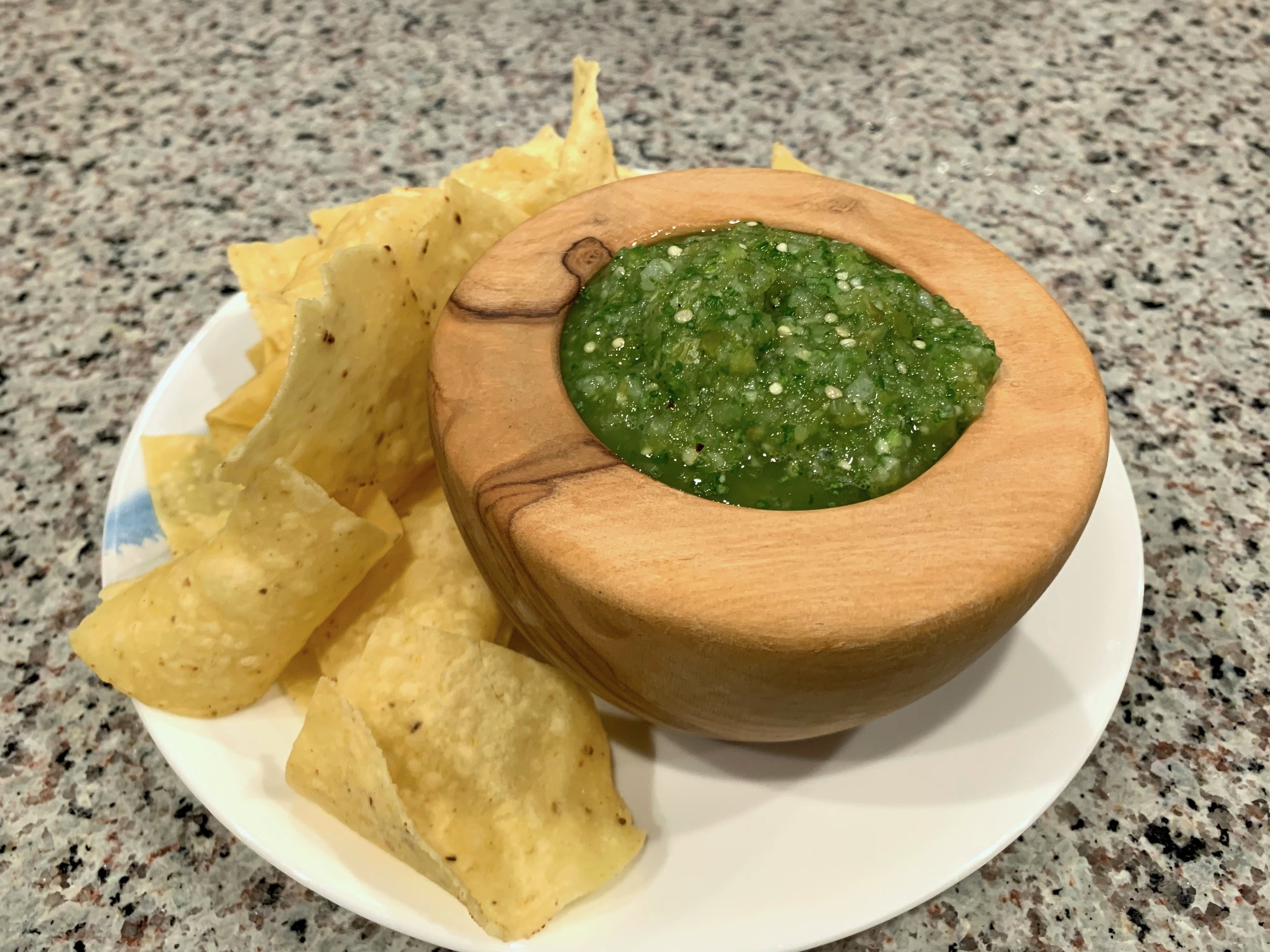Guacamole

Guacamole is an avocado-based dip first developed by the Aztec people of Mesoamerica, where avocados have been cultivated for 10,000 years.[1] It has found its place in both modern Mexican and American cuisines, often served alongside Mexican and Tex-Mex dishes, or with tortilla chips as a snack. It may come as no surprise that the primary ingredients in guacamole—avocados, tomatoes, onions and chili peppers—all originated in the New World. However, guacamole recipes now considered traditional also incorporate several Old World ingredients—garlic and lime.
While a staple in Mexico for centuries, guacamole did not become popular in the United States until the import ban on avocados from Mexico was lifted in the 1990s, in conjunction with the signing of the North American Free Trade Agreement (NAFTA).[2] In the years since then, the American consumption of avocados has quadrupled. Avocados, particularly in the form of guacamole, have now become a common sight in the United States, both in restaurants and as part of game day snack spreads.
Ingredients
4 Hass avocados
1 red onion, diced
1 tomato, diced
¼ cup cilantro, chopped
1 lime
1 jalapeño pepper, minced
3 cloves garlic, minced
1 tsp salt
1 tsp cumin
Because avocado tends to discolor quickly in air (more on this later), we will begin by preparing the other ingredients. Since we are relying on the tomato to bring a fair amount of sweetness to balance out the multiple sources of heat, this is a good recipe in which to splurge for a high-quality tomato, something vine-ripened and/or heirloom. Dice the tomato and red onion, and finely mince the garlic and jalapeño pepper, discarding the pepper seeds. Chop the cilantro as well. While a rough chop is fine for the leaves, chop the stalks finely to avoid unpleasant long fibers in the final guacamole. Give the chopped onions a rinse in cold water, either in a strainer or bowl, to reduce their pungency.
With the other ingredients prepared, let us now talk avocados. While most cultivars of avocado work well for guacamole, the most common variety available in the United States is the Hass avocado, discovered by a California mailman and amateur horticulturalist in 1926.[3] For guacamole, it is important that the avocados are soft and ripe. Scoop the pulp of each avocado into a large bowl, and immediately squeeze the lime juice into the bowl. The addition of the acid helps slow browning. Add the salt as well, and mash the avocado until you reach your desired degree of smoothness.
Add in all of our prepared ingredients, along with a small amount of cumin, which provides the guacamole with a bit of earthiness. Mix well to combine and serve immediately, or hold in the refrigerator. The flavor of guacamole improves in the hours after mixing, as the flavors meld.
Let us now take a minute to contemplate the biggest conundrum when it comes to storing guacamole—how do you stop it from turning brown?
To answer this question, let us first quickly go over why certain fruits, such as avocados, apples, and bananas, turn brown. Avocados and apples contain a class of compounds known as phenols, which can react with oxygen to create quinones. This process is hastened by the enzyme polyphenol oxidase.[4] The quinones then polymerize to form melanin, giving the surface of the fruit the brown color we associate with oxidation.[5]
We can combat this reaction by reducing the efficiency of the enzyme, which we can do by reducing the temperature and lowering the pH. Keeping the guacamole cold will reduce the rate of browning, and you should be storing guacamole in the refrigerator anyway for food safety reasons. As for pH, it is possible to prevent browning by increasing the acid content dramatically with more lime and lemon juice, but personally I find that adding this much acid upsets the flavor profile of the guacamole.
This brings us to the second way we can combat the reaction—starving the system of oxygen. When we cover avocados tightly with plastic wrap, this is what we are trying to accomplish. My favorite method for keeping guacamole green, however, takes inspiration from methods used in chemistry to keep certain metals from reacting on contact with air—submerge it in a liquid! Pack your guacamole into a container (the less surface area the better), then pour in enough water to cover the guacamole by half an inch or so. The water keeps the surface of the guacamole from touching the oxygen in the air, keeping it perfectly green. Homemade guacamole is dense enough to not absorb any of the water; this method tends to work less well with store-bought guacamole. When you are ready to use it again, simply poor off the water, give the guacamole a stir, and serve.
Substitutions
Guacamole is a very flexible recipe, and many ingredients can be added to the mix, such as diced mango and pineapple, crumbled bacon, scallions, or corn.
If you can’t find a good vine-ripe tomato, go for cherry tomatoes, which tend to be sweeter than their larger cousins.
If you want to reduce the heat level on this recipe, you can reduce the amount of red onion, and omit the jalapeño pepper. If you want to increase the heat level, there are several options available. You can keep the jalapeño seeds in the final mix, or you can substitute the jalapeño for a serrano pepper, a hotter pepper also commonly used in guacamole recipes. A pinch of cayenne pepper also works well here.
[1] The word “guacamole” is derived from the Aztec “āhuacamolli,” which translates to “avocado sauce.”
[2] While popular for many years in California, where it was grown, avocados remained for decades an expensive luxury food in much of the United States.
[3] 95% of the avocados produced in California are Hass avocados. Rudolph Hass had set out to grow Fuerte avocados, but to save money, he decided that rather than buy new Fuerte trees, he would plant avocado seeds of unknown origin and then graft the trees over to Fuerte. However, one tree rejected the Fuerte graft three times. Hass wanted to cut it down, but was advised by a friend to, “just leave it alone and see what happens.” It was this tree that produced the first Hass avocados.
[4] Why have these fruits evolved to have this seemingly destructive enzyme? Quinones are toxic to many bacteria, so by having a mechanism which generates quinones if part of the fruit is exposed to the outside environment, the fruit is able to defend itself from bacteria and slow down the process of rotting, maximizing the time period in which the fruit is available to be eaten by a helpful animal which will then carry its seeds. The discoloration is just a side effect.
[5] Melanin is the same polymer which colors human skin, and is found elsewhere in nature as well, such as in squid ink and bird feathers.
Recipe
Prep Time: 10 min Cook Time: 0 min Total Time: 10 min
Difficulty: 1/5
Heat Sources: None
Servings: 8
Ingredients
4 Hass avocados
1 red onion, diced
1 tomato, diced
¼ cup cilantro, chopped
1 lime
1 jalapeño pepper, minced
3 cloves garlic, minced
1 tsp salt
1 tsp cumin
Instructions
1. Dice the onion and tomato, mince the garlic and jalapeño pepper, and chop the cilantro. Rinse the chopped onions in cold water.
2. Scoop the avocado pulp into a large bowl, add salt and the juice of a lime, and mash.
3. Add cumin, garlic, jalapeño, onion, and tomato to the bowl, and stir to combine.


